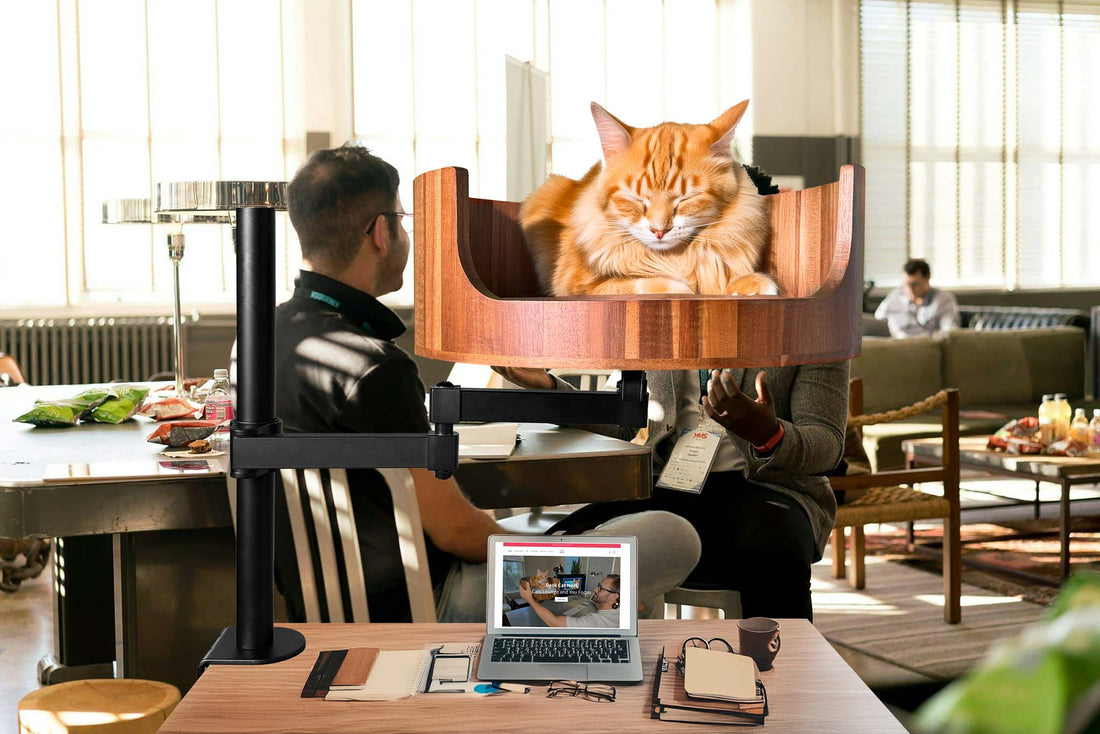
What Does It Mean When a Cat is Wagging Its Tail?
Share
Desk Cat Nest is a popular online resource for cat lovers seeking answers to their feline-related queries. One common behavior that many cat owners find confusing is when their cat wags its tail. In this article, we will explore what it means when a cat wags its tail, providing insights into the various reasons behind this behavior.
When a cat wags its tail, it can signal a range of emotions and intentions. Contrary to popular belief, a wagging tail does not always indicate that a cat is happy or playful. In fact, it can often signify that a cat is feeling agitated, anxious, or even aggressive. By understanding the different types of tail wagging and the accompanying body language cues, cat owners can better interpret their pet's feelings and respond accordingly. Join us as we delve into the mysterious world of cat communication and uncover the true meaning behind this seemingly simple yet complex behavior.
1. Tail wagging in cats can indicate various emotions, not just happiness like in dogs.
2. Tail flicking or lashing can show agitation or irritation in a cat.
3. A slow, gentle wag may indicate curiosity or indecision.
4. Rapid tail movements could signal aggression or overstimulation.
5. Understanding tail language can help cat owners better communicate and address their pet's needs.
Understanding Cat Tail Language
When a cat wags its tail, it can communicate a variety of emotions and intentions. Contrary to popular belief, a wagging tail does not always indicate a happy cat. In fact, a cat may wag its tail aggressively when feeling threatened or anxious. Understanding the nuances of cat tail language is crucial for cat owners to better interpret their feline companion's feelings.
Signs of Aggression
One of the most common reasons a cat wags its tail is to display aggression. Cats may flick or thrash their tails rapidly when they are feeling defensive or preparing to attack. This behavior is often accompanied by other signs of aggression such as flattened ears, dilated pupils, and a tense body posture. If you notice your cat wagging its tail aggressively, it is important to give them space and avoid any confrontational interactions.
Signs of Playfulness
In some cases, a cat may wag its tail as a sign of playfulness. Playful tail wagging is typically slower and more relaxed compared to aggressive tail flicking. Cats may wag their tails while stalking a toy or playfully engaging with another cat. It is important to observe your cat's overall body language to determine whether the tail wagging is a sign of playfulness or aggression.
When to Seek Veterinary Advice
If your cat is frequently wagging its tail in a manner that seems unusual or persistent, it may be a sign of an underlying health issue. Conditions such as pain, discomfort, or neurological problems can manifest as abnormal tail wagging behavior. In such cases, it is recommended to seek veterinary advice to rule out any potential medical concerns and ensure the well-being of your feline companion.
## Frequently Asked Questions
### Why does my cat wag its tail?
When a cat is wagging its tail, it can indicate a range of emotions and behaviors. It could mean that your cat is feeling playful, excited, or is trying to communicate with you. However, it can also signify that your cat is feeling stressed, agitated, or annoyed.
### How can I tell if my cat's tail wagging is a positive or negative sign?
To determine whether your cat's tail wagging is positive or negative, pay attention to the rest of your cat's body language. If your cat's ears are forward, and they seem relaxed, the tail wagging is likely a positive sign. However, if your cat's ears are pinned back, and they appear tense, it could indicate a negative emotion.
### Should I try to interact with my cat when it is wagging its tail?
If your cat is wagging its tail in a playful manner, it could be a good time to engage with them in play. However, if your cat's tail wagging is associated with stress or annoyance, it is best to give your cat some space and allow them to calm down on their own.
### Is tail wagging behaviour the same in all cats?
Tail wagging behavior can vary from cat to cat. Some cats may wag their tails more frequently or forcefully than others, while some cats may rarely wag their tails at all. It is essential to observe your individual cat's behavior and body language to understand what their tail wagging means.
In conclusion, understanding why a cat is wagging its tail is crucial for proper communication with our feline companions. A Desk Cat Bed provides a comfortable and safe space for cats to relax and unwind, which can help alleviate stress and prevent tail wagging out of agitation. With its soft cushioning and elevated design, the Desk Cat Bed offers a cozy retreat for cats to curl up and feel secure. By investing in a Desk Cat Bed, pet owners can ensure that their furry friends have a calming sanctuary to retreat to when they need it most.



















































